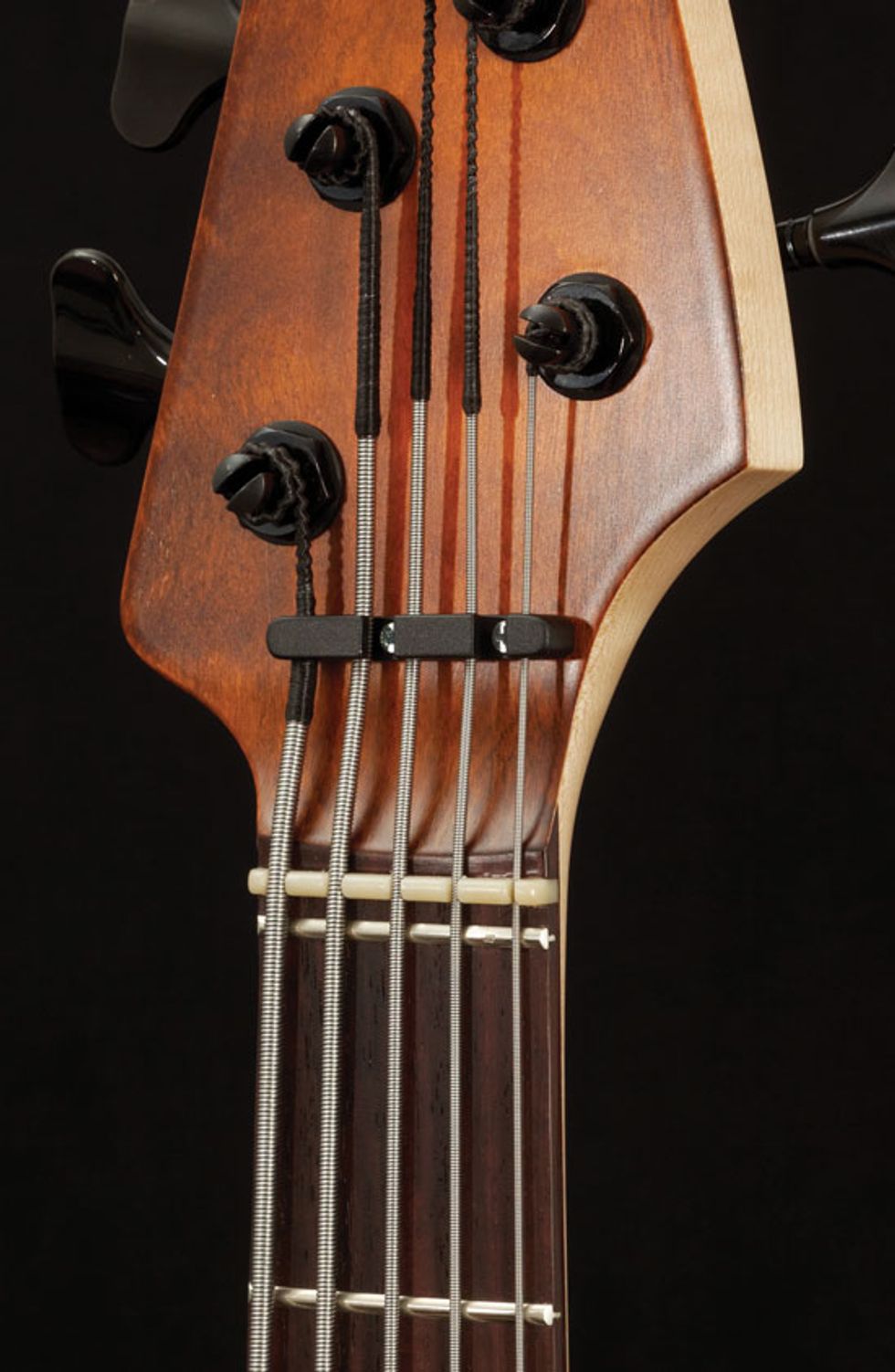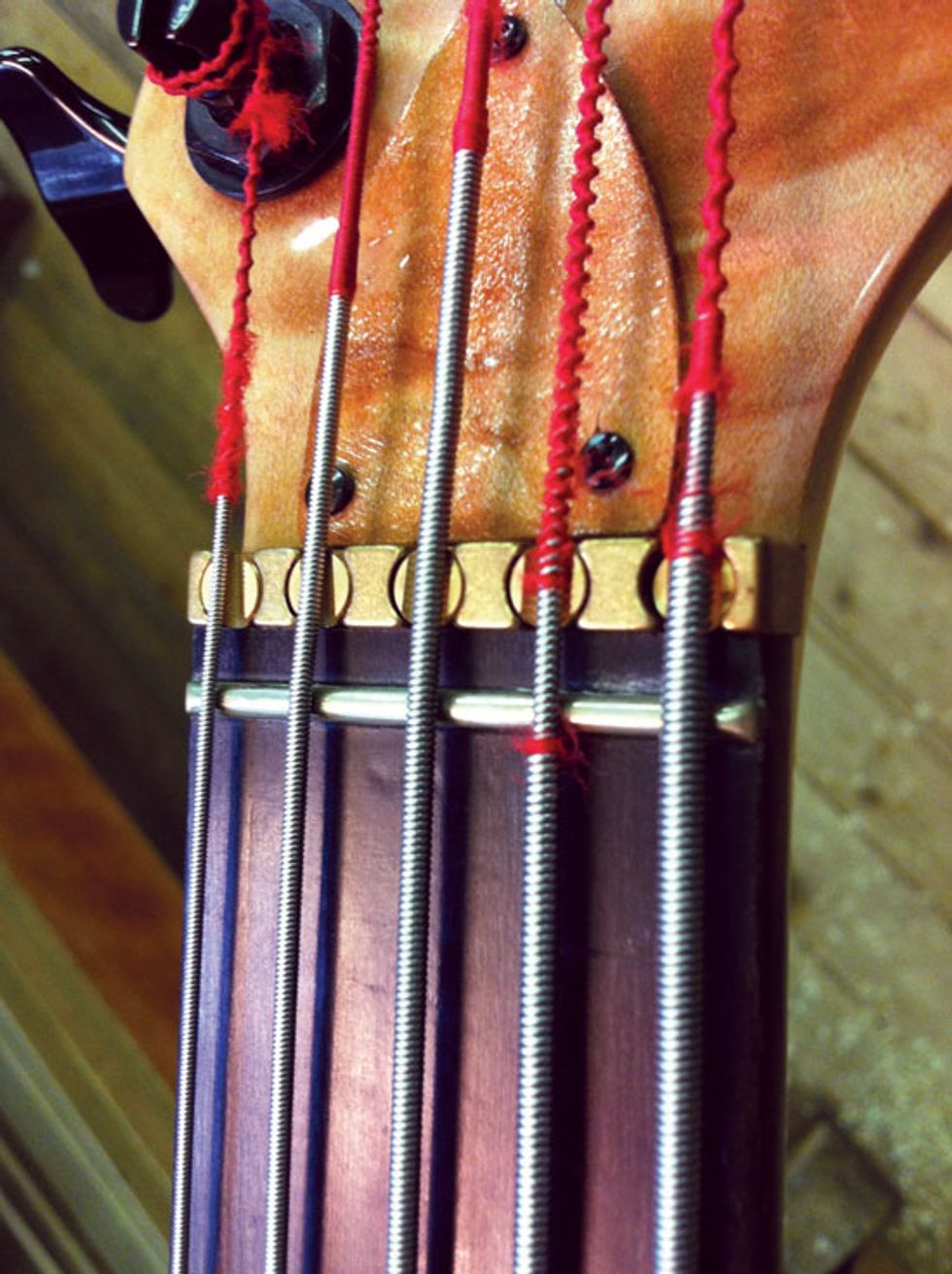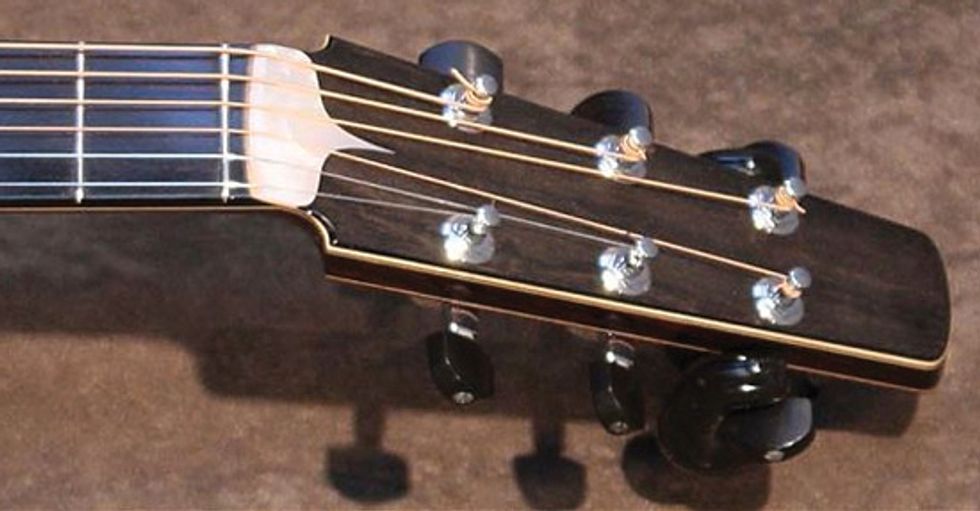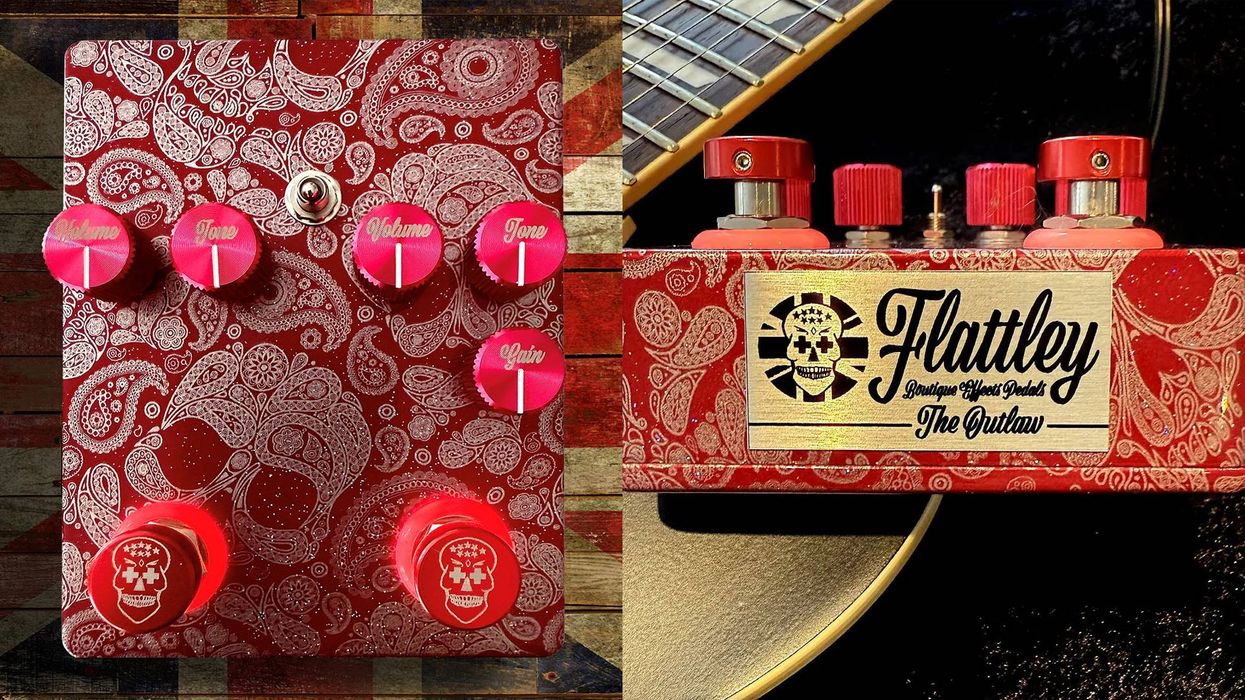In earlier centuries, acoustic guitar, mandolin, and lute production included a lot of local specialties that were handed down from generation to generation. Examples of this include a special bracing pattern or regional materials and woods that were incorporated only into local instruments.
The electric bass, being a very young instrument, grew up in “international” times. Parts, ideas, and solutions might originate in a specific geographical area, but once these were adopted, they were used everywhere in the world (patents excepted, of course). So it’s a bit surprising to stumble over something in guitar design that’s called European, or even more specifically, German: And that’s the zero fret.
Here’s a short rundown for those not yet familiar with zero-fret technology. A traditional string nut has several functions: It serves as one side of the bearing of the string. It also sets the height of the strings and aligns their spacing, and defines the end of the fretboard and anchors one point of its intonation.
Fig. 1. The zero fret done right. Photo courtesy of www.marleaux-bass.de
A zero fret separates the business of spacing and height, so you end up with two parts instead of one. It is simply another fret positioned where a standard nut would be situated (Fig. 1). A second part—which almost looks like the original nut, but with deeper grooves—is placed behind the zero fret to align the strings. That’s it!
The zero fret takes care of the intonation and, more importantly, establishes the correct and minimal string height. There’s no better height than being identical to those other frets.
There’s some talk of a zero fret needing to be higher than the others, but that just doesn’t make any sense. If the following fret would need to be higher than the previous one, our fretboard would look like a set of stairs.
Historically, only a few U.S. instrument makers used a zero fret. And when the ’60s guitar boom hit, many of the cheaper instruments used a zero fret, so consequently the zero-fret concept was seen as a hallmark of budget guitars.
Generally, there shouldn’t be much difference in manufacturing costs. The zero fret requires two parts, while cutting four nut slots that consistently offer the correct height and spacing is costly in terms of time.
Of course, any nut can be set up for the same action and playability as a zero fret, but if you’ve ever slotted a nut you know how time-consuming it is to accurately set string height. Many nuts are left higher than necessary because shortly after being perfectly cut, the slots wear too low. If the nut is left too high, the intonation will also suffer because pressing down a string raises tension ... especially the closer you get to the nut—a bass player’s main moneymaking area.
So other than providing good, low action, what else does a zero fret offer? A classic 4-string bass with a nut and 21 frets gives you 88 notes—84 of which you access by holding the string against a polished nickel-silver fret. But the bass player’s favorite four notes are generated by running the string through a groove in a piece of plastic or a dead animal body part.
Why would anyone want these four notes to sound different? Yes, we know there has been a lot of great music played using bone or plastic nuts, but with all the lengthy debates about tone woods, the sonic qualities of different finishes, or even the brand of the battery in your active circuit affecting its sound, I can only hope your nut is at least made of very magical “tone bone.”
Now, let’s talk about friction. You’ll want the nut to have a minimum of sticking friction to achieve good, stable tuning. There is a technical factor for this. It is dimensionless, and the lower the value, the better for tuning. Steel-on-steel is around 0.15, while steel-on-synthetics is between 0.26–0.46. Assuming identical forces, the zero fret will put all down pressure on the slipperier contact of steel-on-steel.
One argument against the zero-fret concept has been fret wear, although this mainly comes from guitarists, saying the thinner strings cut little grooves into the zero fret, causing strange “pling” sounds if it pops out while you’re bending a string. Tell that to Brian May, who finally had the zero fret on his “Red Special” swapped after 40 years, while the rest of the frets had been replaced way more often. And you can’t say he didn’t use it.
Several luthiers make zero frets from stainless steel, perhaps simply to avoid the endless discussion. Fret wear mainly comes from friction, not contact. The zero fret wears much less than the other frets, as the string break point is basically motionless. Except for tuning, there is very little motion there!
Fig. 2. A very confusing
arrangement: a zero fret plus adjustable nut.
Fig. 3. Zero fret with a compensating nut behind it!
Photo courtesy of acousticmusic.org
So why aren’t zero frets used on every instrument? Maybe because we Germans want to keep that tiny local specialty for ourselves, which is why we try to confuse you with pictures of very “creative” zero-fret arrangements (Fig. 2), and—sacrilege—even smuggling in a photo of a guitar (Fig. 3).
 Heiko Hoepfinger is a German
physicist and long-time bassist, classical
guitarist, and motorcycle enthusiast. His
work on fuel cells for the European orbital
glider Hermes got him deeply into modern
materials and physical acoustics, and
led him to form BassLab (basslab.de)—a
manufacturer of monocoque guitars and basses. You can
reach him at chefchen@basslab.de.
Heiko Hoepfinger is a German
physicist and long-time bassist, classical
guitarist, and motorcycle enthusiast. His
work on fuel cells for the European orbital
glider Hermes got him deeply into modern
materials and physical acoustics, and
led him to form BassLab (basslab.de)—a
manufacturer of monocoque guitars and basses. You can
reach him at chefchen@basslab.de.







![Rig Rundown: AFI [2025]](https://www.premierguitar.com/media-library/youtube.jpg?id=62064741&width=1245&height=700&quality=70&coordinates=0%2C0%2C0%2C0)












 Shop Scott's Rig
Shop Scott's Rig















































